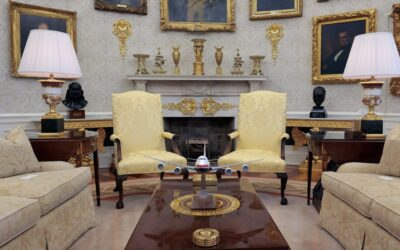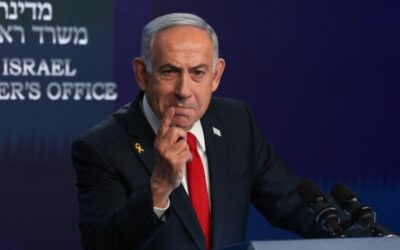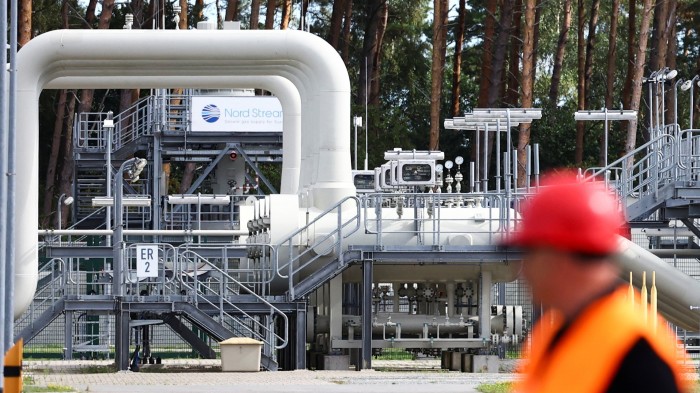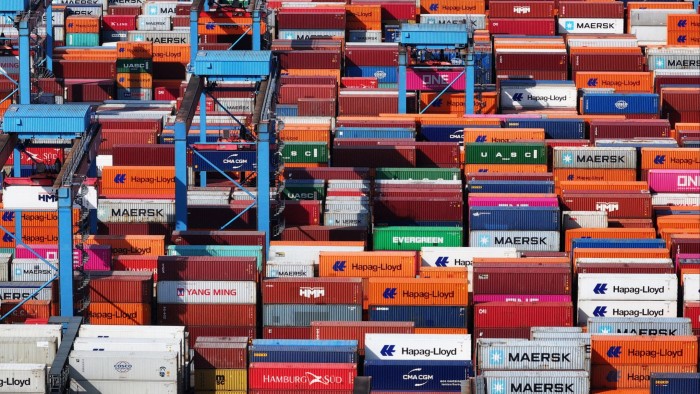Trump’s trade onslaught imperils chance of China ‘grand bargain’
Donald Trump’s latest tariff attack on China could imperil any possible “grand bargain” between Washington and Beijing and drive a hard decoupling between the world’s two largest economies, analysts said.
Levies on Chinese exports are set to rise to 65 per cent or higher, after the US president added 34 per cent reciprocal tariffs, on top of the 20 per cent of levies he had already imposed since re-entering the White House.
Economists and analysts said the measures could sharply reduce China’s GDP growth this year, and push Beijing to rebalance its economic model radically from manufacturing towards domestic consumption — something many experts have long advocated.
But the punitive nature of the tariffs could also derail negotiations over a bigger deal to reduce tensions between the superpowers in areas ranging beyond trade, such as Chinese ownership of TikTok and even tensions over Taiwan.
“Negotiations . . . between the US and China have become exceedingly difficult, making it nearly impossible to reduce tariffs to a level that doesn’t harm bilateral trade,” said Zhan Kai, senior counsel at Chinese law firm Yuanda, who represents many Chinese exporters.
With a deadline for a sale of TikTok’s US operations looming on Saturday, one person familiar with the matter in China said Beijing was open to a deal on the short-video platform.
Another person familiar with the matter in the US said China had offered a number of concessions in the hope of averting the worst of the tariffs, ranging from fulfilling the “phase 1” trade deal from Trump’s first term to increasing inward investment to create American manufacturing jobs.
“China and America are such big powers and very much interdependent upon each other,” said Gao Jian, a Shanghai-based foreign policy expert with the Center for International Security and Strategy at Tsinghua University. “There will be a point in time to sit down for negotiations.”
Miao Yanliang, managing director and deputy head of the research department at Chinese brokerage CICC, said that because of intense market competition, producers had little room to reduce their margins, meaning the cost of the tariffs would be passed on to US customers.
China also dominates the markets for many goods, such as 68.5 per cent of the global smartphone market, 76 per cent for PCs and nearly 65 per cent for toys, meaning consumers will have few alternatives.
“Tariffs may actually hurt the US consumers even more than last time,” Miao added, referring to Trump’s first term in office.
The deepening trade war comes at a sensitive moment for China’s leader Xi Jinping, who has leaned on exports to steer the world’s second-largest economy through a property sector slump and prolonged bout of deflation.
China’s commerce ministry threatened to “resolutely take countermeasures” immediately following Trump’s tariff announcement but did not elaborate.
China was among the biggest targets of Trump’s reciprocal tariffs unveiled on Wednesday. Total US charges on the country’s goods now exceed the 60 per cent level he threatened during the election campaign — what was previously considered a worst-case scenario.
The tariffs could knock 2.4 percentage points off China’s GDP growth and 15.4 percentage points off its overall exports in 2025, before taking into account any measures from Beijing to mitigate the impact, according to economists at Citi.
They added that the 65 per cent tariff level represented an “extreme scenario” of a “hard decoupling” that could force Beijing to undertake a large stimulus package, ease monetary policy and adjust exchange rates.
China could also take countermeasures against US companies and implement more export controls on rare earths and other US-bound goods. Beijing has already targeted about $36bn of US exports including energy, farm goods and cars, and companies including biotech Illumina and Calvin Klein parent PVH Corp.
Trump also targeted countries through which Chinese companies have been diverting production to the US such as Vietnam, which was hit by 46 per cent tariffs.
Morgan Stanley chief China economist Robin Xing wrote that beyond the “direct tariff shock” on China, there would also be an “indirect impact” as the broader US tariff rises slowed global trade, which would hit China as the world’s largest exporter.
Gao added that outrage over Trump’s “tariff addiction” could create common ground for trade talks between China and the EU, as well as with south-east Asia.
But the EU, which is already complaining of soaring trade deficits with China, would be reluctant to absorb additional exports, analysts noted.
Instead, Beijing would need to take radical steps to raise domestic demand, economists said — a move that could also generate goodwill with the EU and other trading partners.
This would require a much larger and more targeted stimulus package than the plan announced last month, in which Beijing set a record central government deficit of 4 per cent of GDP.
“One way that China could take over leadership of the rest of the world and try to preserve a liberal trading order would be to scale up its domestic demand very rapidly,” said Fred Neumann, chief Asia economist at HSBC.
“That would then mean that Japan, South Korea, Australia and the European Union would look [to] export into China, and would receive less competitive pressure.”
Swiftly rebalancing China’s economy would be a “monumental task”, Neumann said.
“But at the same time, there is now, for the first time, a real constraint on China’s growth model . . . that has been spectacularly successful in recent decades.”
By Joe Leahy, Ryan McMorrow and Wenjie Ding in Beijing, Edward White and Thomas Hale in Shanghai and Cheng Leng, Chan Ho-him and Gloria Li in Hong Kong







